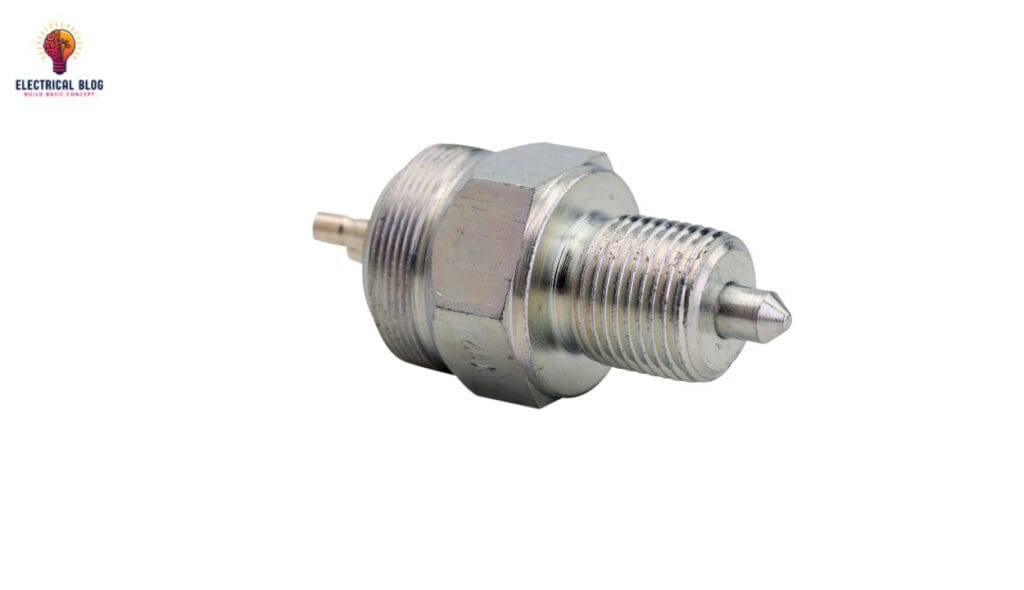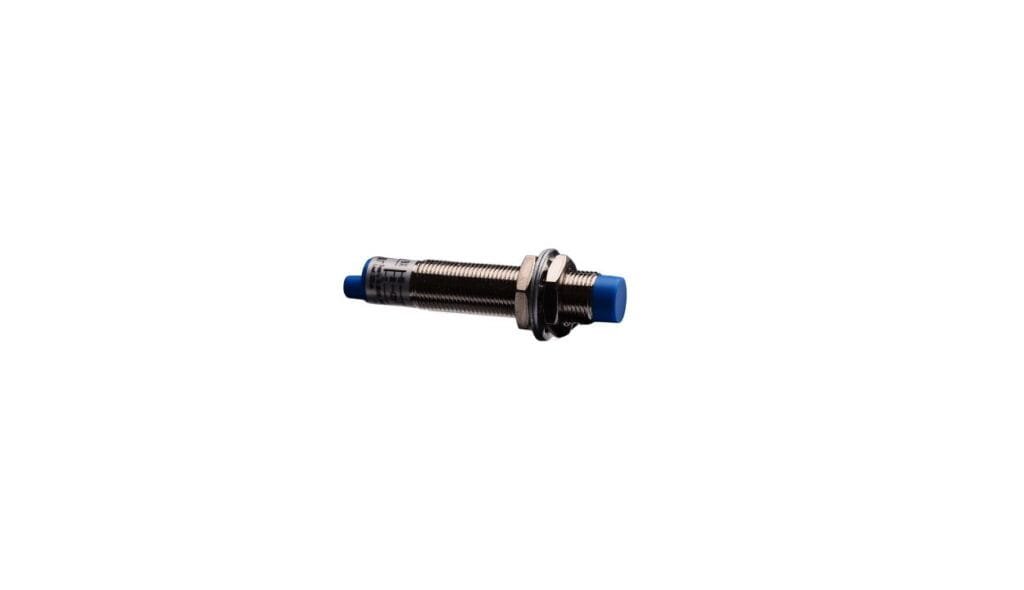Introduction
My first encounter with USM was during a lab session where I tested ultrasonic motors that didn’t rely on electromagnetic fields, unlike conventional ones. These motors are utilized in a completely different way—they depend on the piezoelectric effect and produce vibrations at ultrasonic frequencies, specifically from 20 kHz to 10 MHz, which humans can’t hear because they aren’t audible to normal beings. Invented back in 1965 by V.V. Lavrinko, this technology was a breakthrough in precision motion operation.
While discussing this fascinating technology, I often explain that the motive force here is generated from a component that transforms electrical power into motion using piezoelectric actuators. These actuators work with sensors in USMs to convert information into controlled motion across a range of tasks. It’s this detail that makes USM operation so reliable and compact, especially when ultrasonic sensors and piezoelectric motors are embedded in smart systems.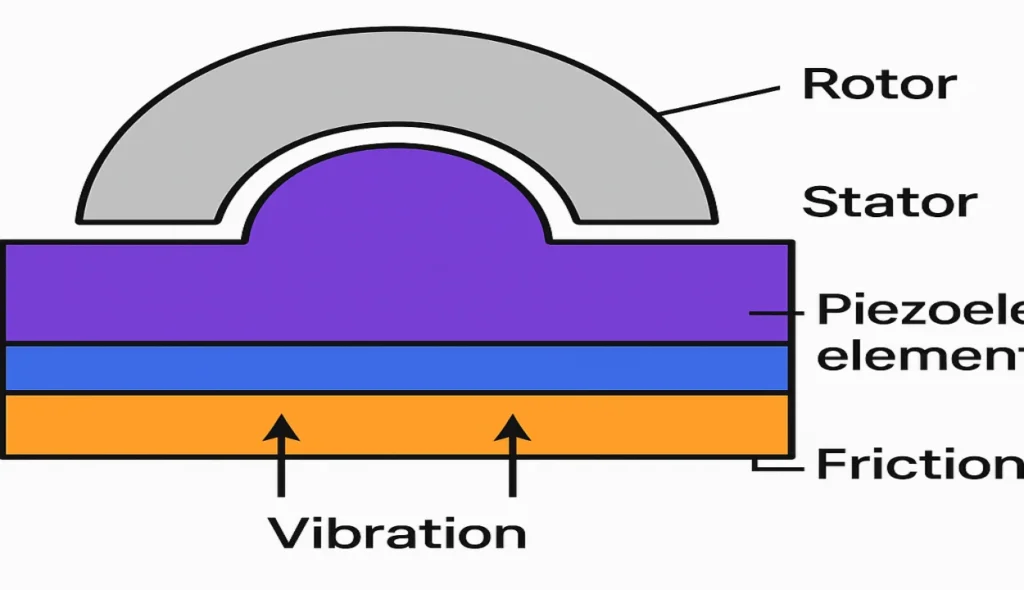
Piezoelectric sensors
Piezoelectric sensors have exceptional precision in quantifying strain, force, or acceleration. When pressure is applied to a crystal, the atoms shift slightly—just 0.1%—causing deformation that produces electrical energy. This process is known as the piezoelectric effect, and it’s how these devices convert physical changes into readable signals using voltage. Their small size and precision make them vital in ultrasonic motor feedback systems.
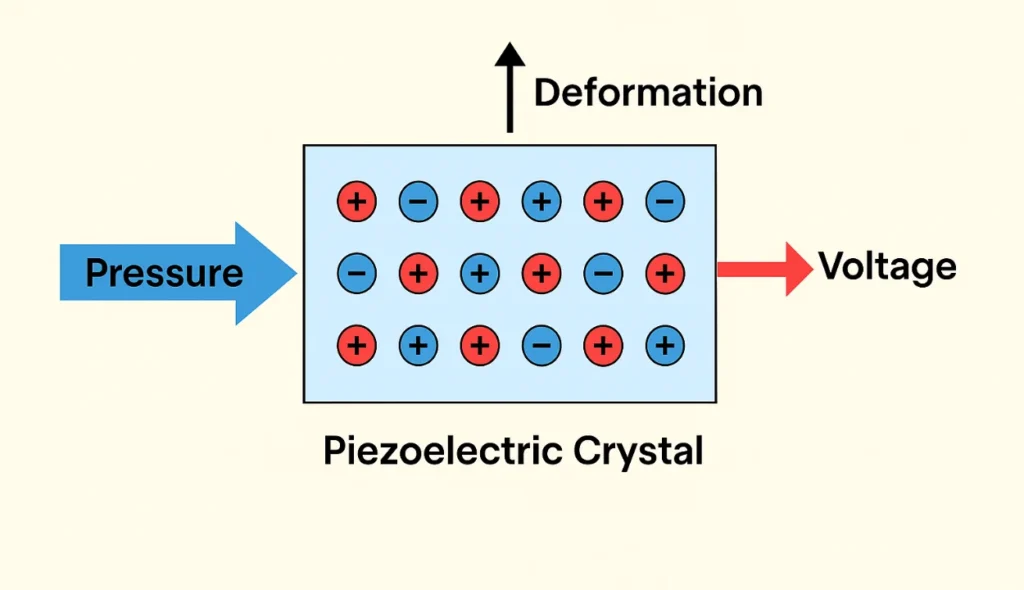
Ultrasonic sensors
Ultrasonic sensors use transducers to send sound waves at high frequency—ranging from 20 kHz to 10 MHz—toward a target. The returning echo helps calculate the time interval, enabling precise detection of any obstacle. This signal processing plays a key role in collision-avoidance systems.

Piezoelectric Actuators
In my optical alignment work, piezoelectric actuators were essential for the fine adjustment of camera lenses, mirror tilt, and machining tools. These compact devices convert electrical signals into precise physical displacement, enabling smooth movement in sensitive equipment. I’ve also used them in hydraulic valves, special-purpose systems, and micromotors for dynamic control.
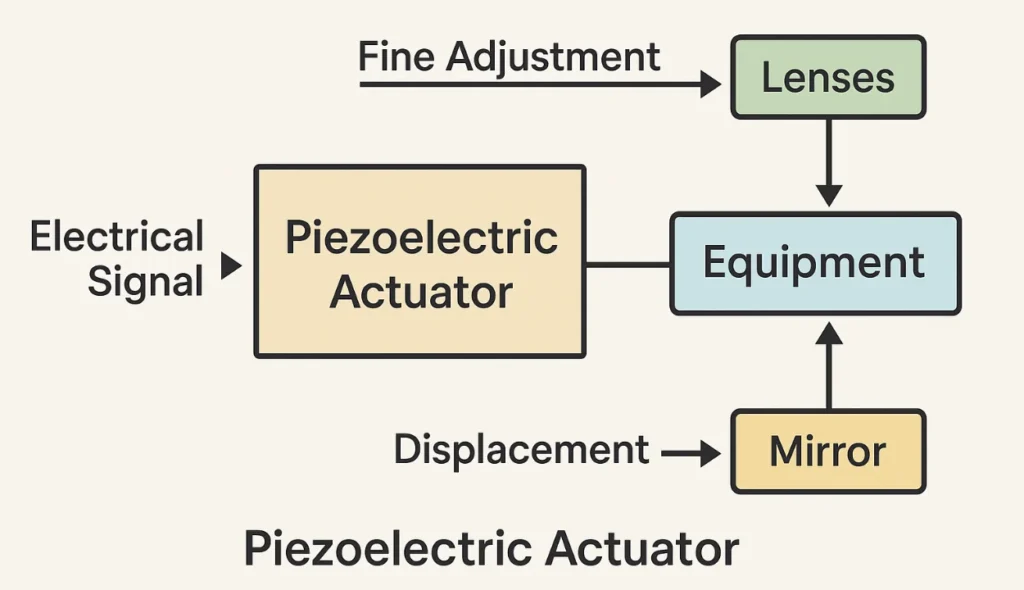
Piezoelectric Ultrasonic Motor Technology
During my experience with USMs, I saw how electric energy creates motion through the piezoelectric effect, essentially acting as the inverse of sensing. The stator creates vibration in contact with the rotor, and this motion gets amplified using resonance. The amplitude of the actuator ranges from 20 to 200 nm, depending on how the design is tuned.
I’ve used materials like quartz, lithium niobate, and lead zirconate titanate, which are known piezoelectric crystal types. These are applied differently in actuators and USMs, and understanding this difference is key in advanced technology builds. Even single material choices can impact how a USM performs under precise conditions. You can also read about Permanent Magnet motor.
Types of Ultrasonic Motors
USMs are classified into different types based on specific criteria, including motor operation and vibration behavior.
By type of operation, we have rotary and linear motors, which serve various precision and speed needs.
When classification depends on vibrator shape, it includes rod, П, cylindrical, and ring (square) designs.
For vibration waveforms, the standing wave type includes unidirectional and bidirectional variations.
Another category is the propagating or traveling wave type, which I’ve seen offer smoother motion control in fine systems.
Each form is uniquely classified to fit exact movement requirements and environmental conditions in real-world use.
Working of the Ultrasonic Motors
In my lab trials, I saw how vibration is generated in the stator of the motor using piezoelectric ceramics. This energy is applied to create micro-motion, which gets amplified through the material’s deformations. The motion is then transferred to the rotor by frictional contact at the interface.
The traveling wave propagates over the surface of the metal stator, inducing rotation in the rotor. Each wave crest contacts the rotor, producing an elliptical motion that alters its trajectory. The rotor rotates in the opposite direction of the propagating wave.
For macro-motion, the micro-motion between the stator and rotor is rectified and used. The USM often consists of a linear translator, active material, and a translator body to support operation. I’ve found that even small forces rely on careful amplification and friction control for high accuracy.
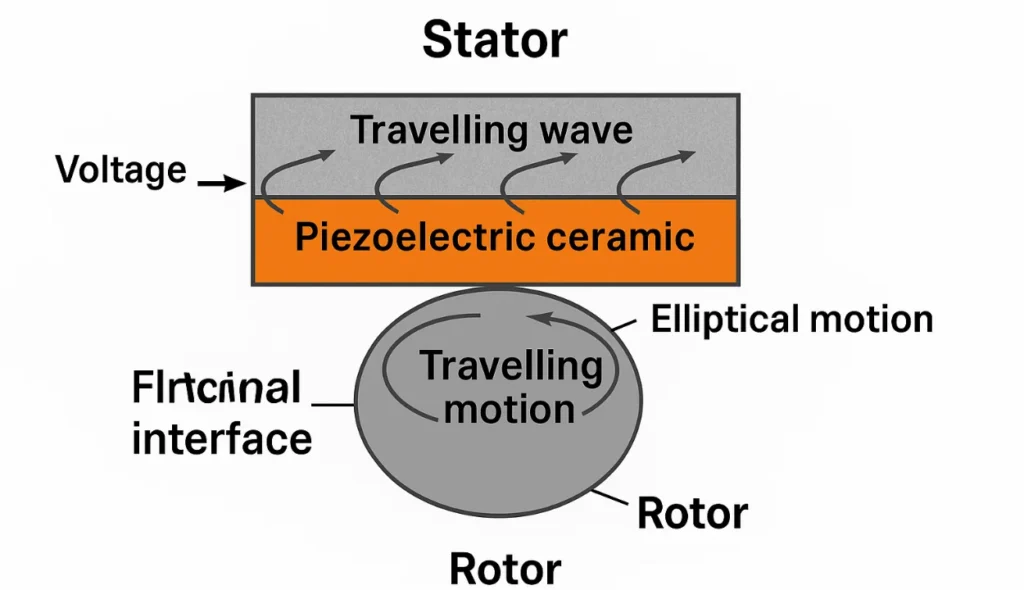
Features and Merits of Ultrasonic Motors
These motors are small, thin, and light in weight, which makes them easy to fit into compact systems.
Their response is excellent, and they offer accurate position and speed control.
With low RPMs ranging from ten to several hundred and high torque, no reduction gears are required.
They offer high-holding power, so even when the power is off, no brakes or clutch are used.
These motors do not contain any electromagnetic material, and they don’t generate waves, making them unaffected in magnetic field areas.
Inaudible frequency vibration is used for driving, which means no noise and quiet operation.
Their efficiency is insensitive to size, making it consistently high in performance.
The mechanical time constant is less than 1 ms, and stepless speed control is supported.
Due to fewer gears and material needs, their design remains minimal while maintaining functionality.
Demerits of Ultrasonic Motors
These motors operate using friction, which leads to less durability over the long term.
A high-frequency power supply is required, making the system slightly more complex and energy-sensitive.
They have drooping speed-torque characteristics, which can affect consistent performance under varying loads.
Applications of Ultrasonic Motors
Ultrasonic motors are widely used for autofocus in camera lenses, allowing precise and quiet adjustments.
They are perfect for compact devices like watches and paper-handling machines, where space is limited.
I’ve seen them used in conveying parts, drying, and ultrasonic cleaning processes in the light industry.
In combustion systems, they help inject oil into burners efficiently without mechanical contact.
Their high potential for miniaturization makes them ideal for advanced equipment in microelectronics.
In the medical field, they are applied in MRI (magnetic resonance imaging) and scanning systems.
I once integrated one to control disk heads in computer hardware, like floppy disks, hard disks, and CD drives.
They’re also trusted in fields like medicine, aerospace, and robotics for their reliability.
Ultrasonic motors are used to automatically control rolling screen systems with great responsiveness.
In the future, they may reshape the automobile industry with nano-positioning and micro-electromechanical system integration.
Their broad applications continue to expand across consumer goods and smart technology solutions.
Conclusion
Ultrasonic motors have revolutionized precision motion control by leveraging the piezoelectric effect and ultrasonic vibration. Their compact size, high torque, and silent operation make them ideal for a wide range of applications—from medical imaging to nano-positioning systems. With no reliance on electromagnetic components, they offer distinct advantages in magnetically sensitive environments.
Despite certain limitations like friction-based wear and the need for high-frequency power, their strengths far outweigh the challenges in most use cases. As technologies like MEMS and robotics evolve, ultrasonic motors will continue to play a key role in shaping future innovations. Their efficiency, flexibility, and versatility ensure a promising future across industries.

